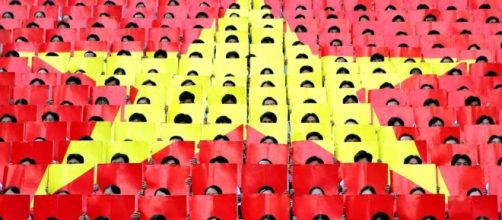The Vietnam War ended over 40 years ago, yet the conflict has undoubtedly shaped modern day Vietnam. This fascinating country, that still remains united under the banner of Communism, has unfiltered reminders of the war peppered throughout. For lovers of history, especially of the military variety, Vietnam is a compelling place to visit.
Wandering the streets of the former capital of South Vietnam, Ho Chi Minh City or Saigon (confusingly even the locals use both names interchangeably) is a history lesson itself. Always, found amongst the French architecture and Buddhist pagodas is the portrait of Vietnam’s enduring hero: Ho Chi Minh.
Billboard after billboard, poster after poster there seems to be an infinite supply of images of this bearded Communist revolutionary. The unifier of North and South known as ‘Uncle Ho’ to the Vietnamese proudly presided over muffled Government messages which emanated from loudspeakers. These odd hallmarks are fantastically Cold War-esque and seem to relate romantically to a time of espionage and ideological rivalry.
The Cu Chi Tunnels.
Just outside the city is the Cu Chi Tunnels - a must visit attraction. The opportunity to crouch through the narrow tunnels and passageways utilised by the Viet Cong gives new perspectives on the ingenuity and tactical genius of these guerrilla fighters. Nguyen, a soft-spoken and reserved tour guide, informed me that the tunnels had been widened so clumsy and lanky foreigners, like myself, could fit through them.
The Viet Cong, however, had to navigate through the tunnels on their stomachs and with full combat equipment.
Despite lacking modern weapons, these Communist fighters based in South Vietnam were formidable opponents. At the Cu Chi Tunnels there is a display that shows how fake ant hills were created to house air holes used to give oxygen to the men underground.
There are also accounts of how the Viet Cong countered American sniffer dogs by littering the tunnels with captured clothes worn by US troops - meaning that the dogs considered the scent to be from friendly forces. The brutal, almost medieval-looking traps are also there to see - with sharpened bamboo spikes featuring in most.
The barbarity of the contraptions was evident when I learned that they were not meant to kill but to maim. A wounded soldier would slow his comrades down while the prospect of activating one of these traps would provide a sickening psychological impact on any future patrols.
The War Remnants Museum
After factoring in many coffee breaks and visits to French bakeries, a visit to the War Remnants Museum in the centre of Ho Chi Minh City is an excellent way to expand your knowledge of the Vietnam War. Unsurprisingly, the museum takes a pro-Vietnamese stance and despite some obvious bias, it was refreshing to try to comprehend the conflict from angles not usually explored in the West. The museum boasts an impressive collection of firearms, photographs, films and vehicles.
Although the exhibits on the devastating impacts of Agent Orange (a chemical sprayed by the Americans) was particularly sobering. The misery caused by this chemical on veterans, on both sides, and civilians, some of whom were born with severe birth defects, is poignantly displayed.
Vietnam is a nation forged by war and even after the US withdrew in the 1970s the nation saw further conflict with neighbouring Cambodia and China. Despite reminders of war being prominent in everyday life, Vietnam is more than a foreign battlefield - it is a mesmerising country that seems to have a knack to surviving the most insurmountable odds. The country proudly displays the red flag of Communism, the hammer and sickle as well as the iconic Ho Chi Minh yet, in some parts of the major cities, rampant advertising and the presence of Western multinationals make it indistinguishable from a Capitalist nation. By absorbing the history of warfare in Vietnam, the present day oddities and past atrocities can begin to be understood.

